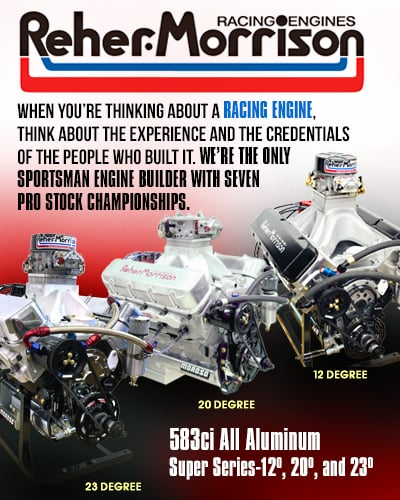CRANE CAMS TURNS 60 YEARS OLD
 There are a handful of pioneers that established the speed industry in the United States and they all shared a common goal-going faster than the other guy. They were first, and foremost, racers; they became businessmen almost by accident, by following their dream of going faster. Harvey Crane, Jr. was one of those individuals. Experimenting with camshafts to "soup-up" his flathead Ford hot rod, he found his designs and quality would outperform any that were available at the time. When other hot rodders found this out they wanted to buy his cams.
There are a handful of pioneers that established the speed industry in the United States and they all shared a common goal-going faster than the other guy. They were first, and foremost, racers; they became businessmen almost by accident, by following their dream of going faster. Harvey Crane, Jr. was one of those individuals. Experimenting with camshafts to "soup-up" his flathead Ford hot rod, he found his designs and quality would outperform any that were available at the time. When other hot rodders found this out they wanted to buy his cams.
These early successes lead Harvey to go into business in 1953, starting in the corner of his father's machine shop, under the name Crane Engineering Company. The company was founded on the desire to produce a superior performing, quality camshaft with a high level for workmanship and repeatable tolerances. This was the foundation of Crane Cams reputation and remains so today. From these humble beginnings, one of the speed industry's iconic companies was born.
During the following years Crane Cams would make great strides, patenting mechanical roller lifter technology and introducing the original Gold Race™ roller tip, needle bearing, aluminum rocker arms. In 1965 Crane Cams pioneered the science of using computers for designing camshaft profiles with the eventual introduction of the CompuCam® series of lobes. The "dual/split pattern" cam designs were produced in the 1950's, and the "four pattern" camshaft designs in 1966.
In 1994 Crane Cams was first to release the fully digital ignition to the speed industry. Our innovative optical trigger distributor line, which was first introduced in 1997, has gone on to win many national championships, later being upgraded to the industry's only fiber optic trigger signal distributor device, again winning championships. Crane Cams was also the first to offer a full line of Retrofit Hydraulic Roller lifters and camshafts for early model engines. Today we offer a complete line of components for today's modern engines, including LS Series and Ford Modular cams.
After 60 years Crane Cams remains a leader in the industry it helped to found. The manufacturing facility in Daytona Beach is still producing the quality cam and valve train products that it is famous for. Including the -Made in the U.S.A.- Crane Cams Ignition product line.
We are still pursuing the dream of going faster.
Just to put things into perspective...
In 1953:
Dwight D. Eisenhower was President.
Other than the moon, there were no other satellites circling the earth.
Sputnik didn't go into orbit for four more years.
The NHRA was just two years old.
It would take another decade for the 200 MPH barrier to be broken in drag racing, and four decades to go 300 MPH.
Ralph Lee Earnhardt just became a full time professional driver, running the Carolina oval tracks. His son Ralph "Dale" Earnhardt (who would eventually become a seven time NASCAR Cup Champion) was just two years old.
Bill Blair won the astonishing purse of $6,755 in his 1953 Oldsmobile on the sands of Daytona Beach.
The Daytona International Speedway wasn't built yet.
The Flat Head Ford V-8 was the racers choice of engines.
There were tons of them available as WWII surplus.
The first Corvette was manufactured in June of 1953; it came with a 235 cu/in Blue Flame straight six engine.
Chevrolet wouldn't have a V8 for two more years, when it offered the 265 cu/in engine in the 1955 Corvette and Bel Air.
SEMA wouldn't be founded for 10 more years.
In 1953 the roots to the speed industry, as we know it today, were just beginning to grow.



































